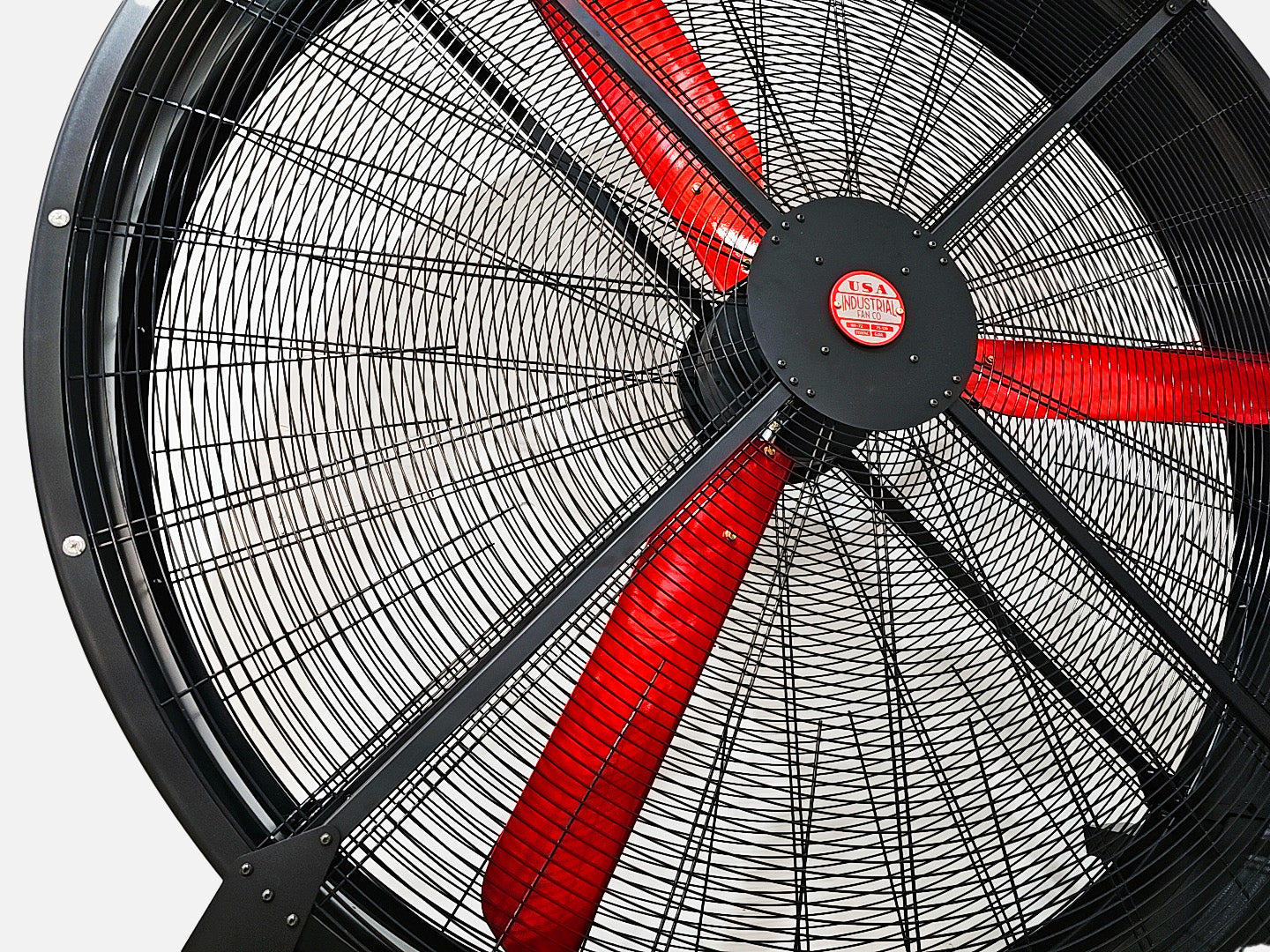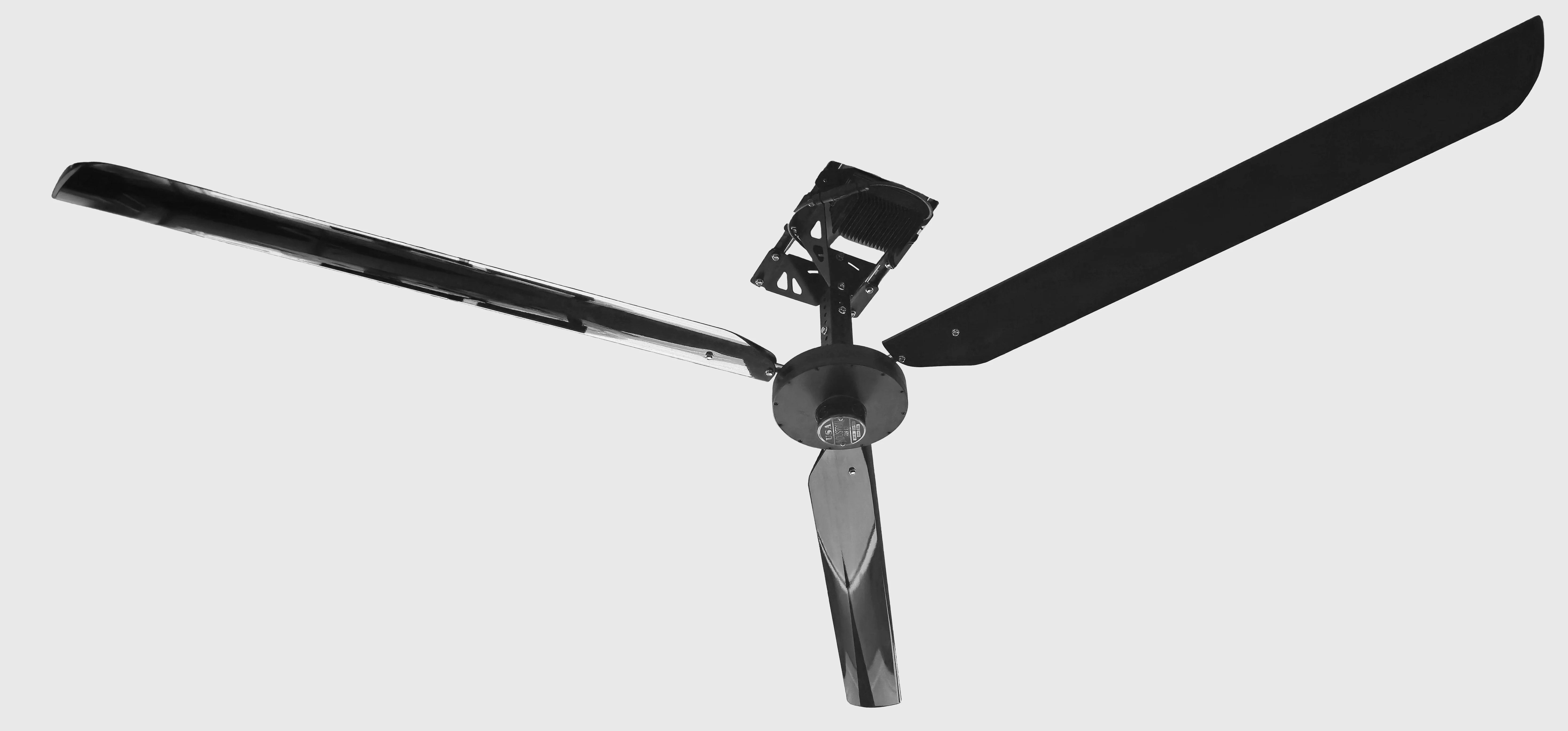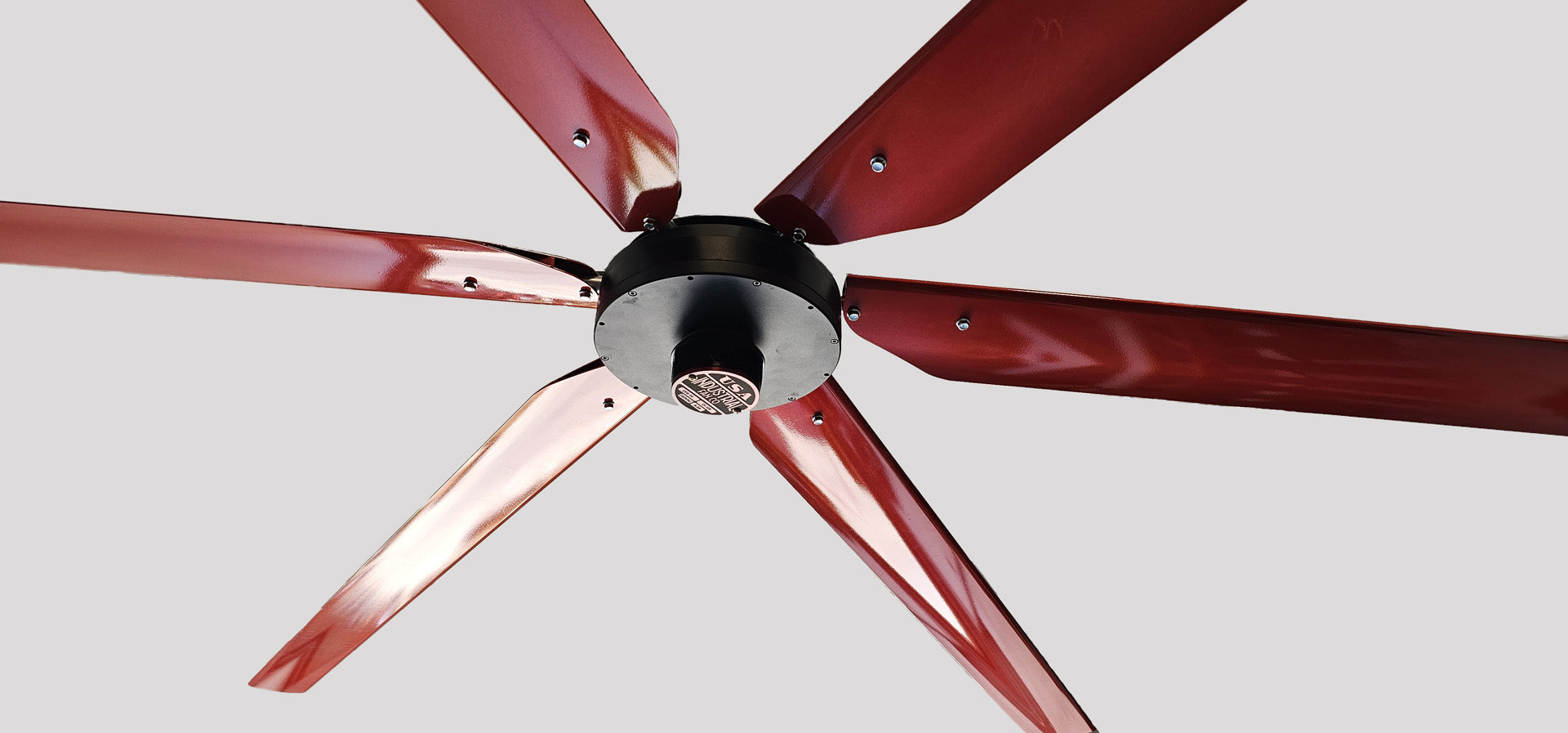The Advantages of Industrial Fans vs. Air Conditioning
In the pursuit of optimal indoor comfort, businesses, warehouses, gyms, agricultural facilities, and even large commercial spaces face a choice between traditional air conditioning systems and newer, energy-efficient solutions, such as Industrial Ceiling Fans and Floor Fans. Both systems serve to regulate the internal environment, yet they operate under vastly different principles and come with distinct benefits. This essay will examine the primary benefits of Industrial fans over air conditioning, including energy efficiency, cost-effectiveness, environmental impact, air quality, maintenance requirements, and suitability for large spaces.

Understanding Industrial Fans and Air Conditioning
Before comparing the two approaches, it is essential to understand how each works. Industrial Fans can be Industrial Floor Fans up to 6 feet or High Volume Low Speed (HVLS) fans, that are large-diameter industrial ceiling fans, typically ranging from 7 to 24 feet in diameter. What they share in common is relatively slow rotor speed and large airfoil blades that can move huge volumes of air very efficiently. They are designed to create gentle, non-disruptive air circulation over a wide area, enhancing thermal comfort through increased air movement. In contrast, air conditioning systems work by mechanically removing heat and humidity from the air, actively cooling the space through the use of compressed refrigerants.
While both systems aim to improve indoor comfort, their methods and implications differ significantly, with Industrial fans offering a range of benefits that make them a compelling alternative, or even a complement to air conditioning in many scenarios.
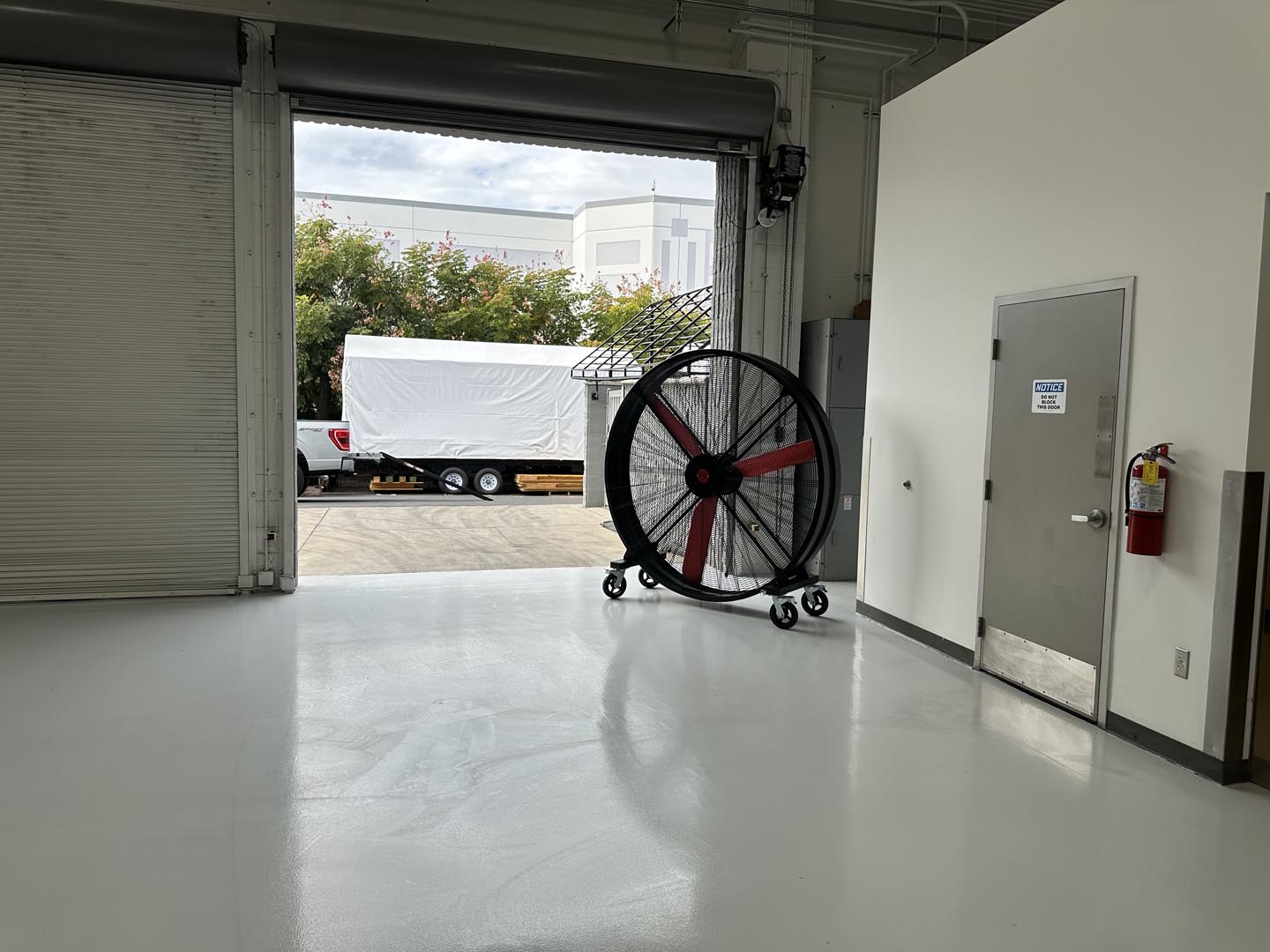
Energy Efficiency
One of the most significant advantages of Industrial fans is their exceptional energy efficiency. These fans move significantly larger volumes of air than any air movement equipment while consuming a fraction of the electricity used by traditional HVAC systems. A single HVLS fan can also replace multiple smaller high-speed fans, reducing the need for numerous energy-consuming, noisy devices.
By creating a wind-chill effect, Industrial fans can make occupants feel up to 10°F (5.5°C) cooler without lowering the actual air temperature. In climates with high humidity or applications where extreme cooling is not necessary, Industrial fans can provide sufficient thermal comfort on their own. Even when used in conjunction with AC, they reduce the load on the system by promoting more uniform temperature distribution, allowing the thermostat to be set several degrees higher, or lower (in winter) without sacrificing comfort.
This effect can lead to energy savings of up to 30% or more, especially in large industrial or commercial facilities. Refer to the excellent work done by the Center for the Built Environment at UC Berkeley.
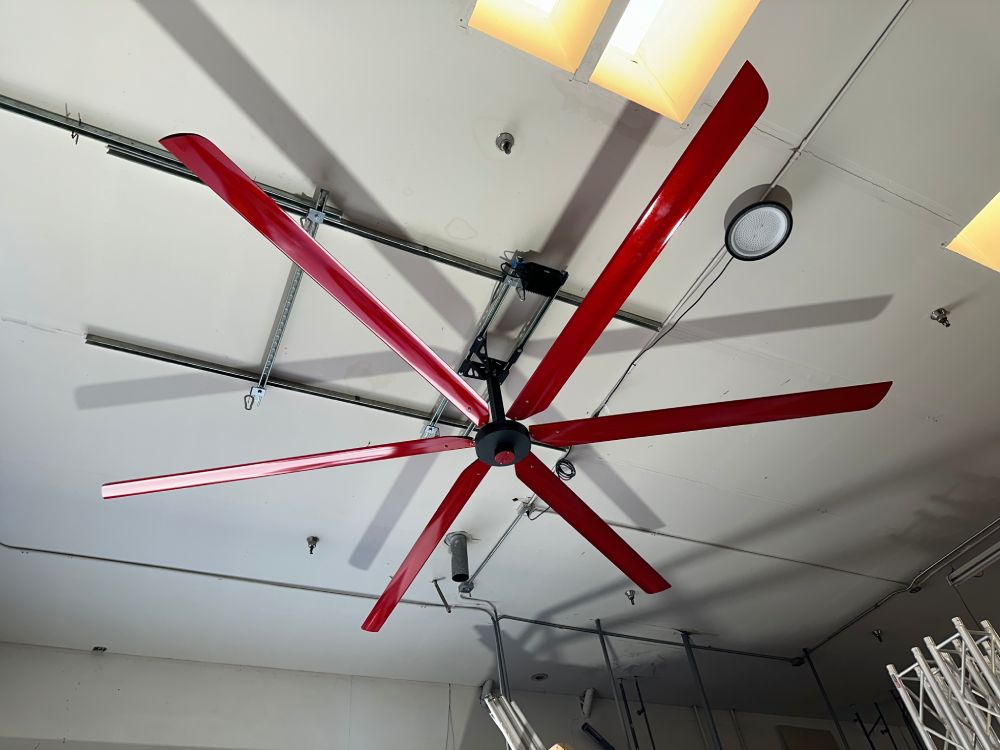
Lower CAPEX and OPEX Costs
Industrial fans not only consume less energy but also cost significantly less to buy, install, operate, and maintain. Air conditioning units require regular servicing, including filter replacements, refrigerant top-ups, and cleaning of evaporator and condenser coils. They are also more susceptible to mechanical failures due to the complexity of their systems.
HVLS fans, on the other hand, are relatively simple machines with as few as one moving part, lower operating speeds, they experience less wear and tear, resulting in longer lifespans and lower maintenance requirements. This translates to immediate cost savings that extend over time, not just in electricity bills, but also in reduced service calls, replacement parts, and downtime.
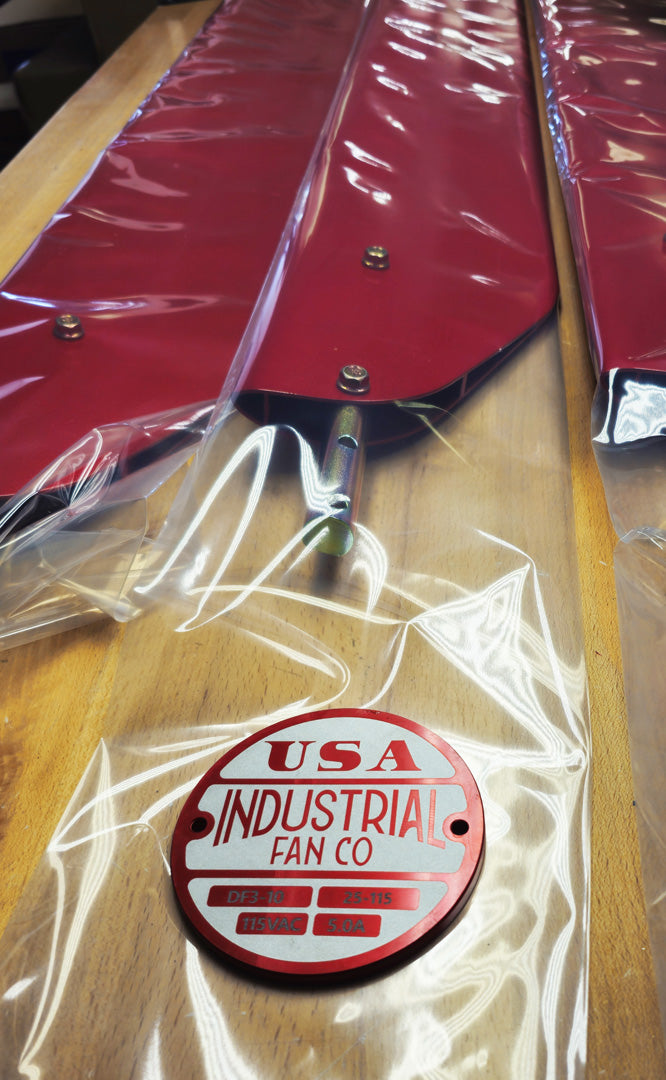
Improved Air Circulation and Indoor Air Quality
Another area where Industrial fans shine is in enhancing air circulation and improving indoor air quality. Air conditioning systems often recycle the same air, which can lead to a buildup of allergens, carbon dioxide, and other pollutants. In contrast, Industrial fans continuously mix the air, reducing stratification (the layering of air at different temperatures) and ensuring a more even distribution of air throughout the space.
In applications like barns, gyms, warehouses, and manufacturing plants, where dust, fumes, or humidity may be present, this improved circulation helps remove contaminants and maintain a healthier environment for occupants. Industrial fans can also help control moisture, reducing the risk of mold and mildew formation by creating drier, more evenly ventilated conditions.
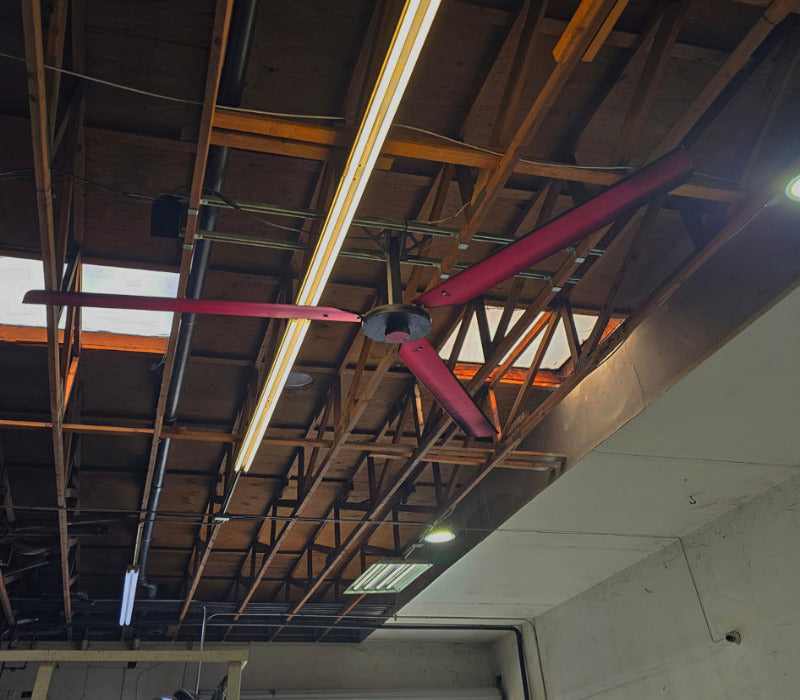
Applicability in Large Spaces
HVLS fans are especially advantageous in large or open spaces where air conditioning may be impractical or cost-prohibitive. Cooling massive volumes of air with traditional HVAC systems requires significant energy, and the installation of ductwork or multiple units can be expensive and complex. The buildings are often uninsulated with large doors left open year-round to facilitate operations, making HVAC cooling futile as the thermal leakage is unmanageable.
HVLS fans, on the other hand, are designed to cover vast areas—up to 20,000 square feet with a single unit. They create a consistent airflow pattern that reaches the floor, walls, and corners of large buildings, enhancing comfort across the entire space. This makes them ideal for warehouses, gymnasiums, airplane hangars, and agricultural structures where installing AC would be impractical or inefficient.
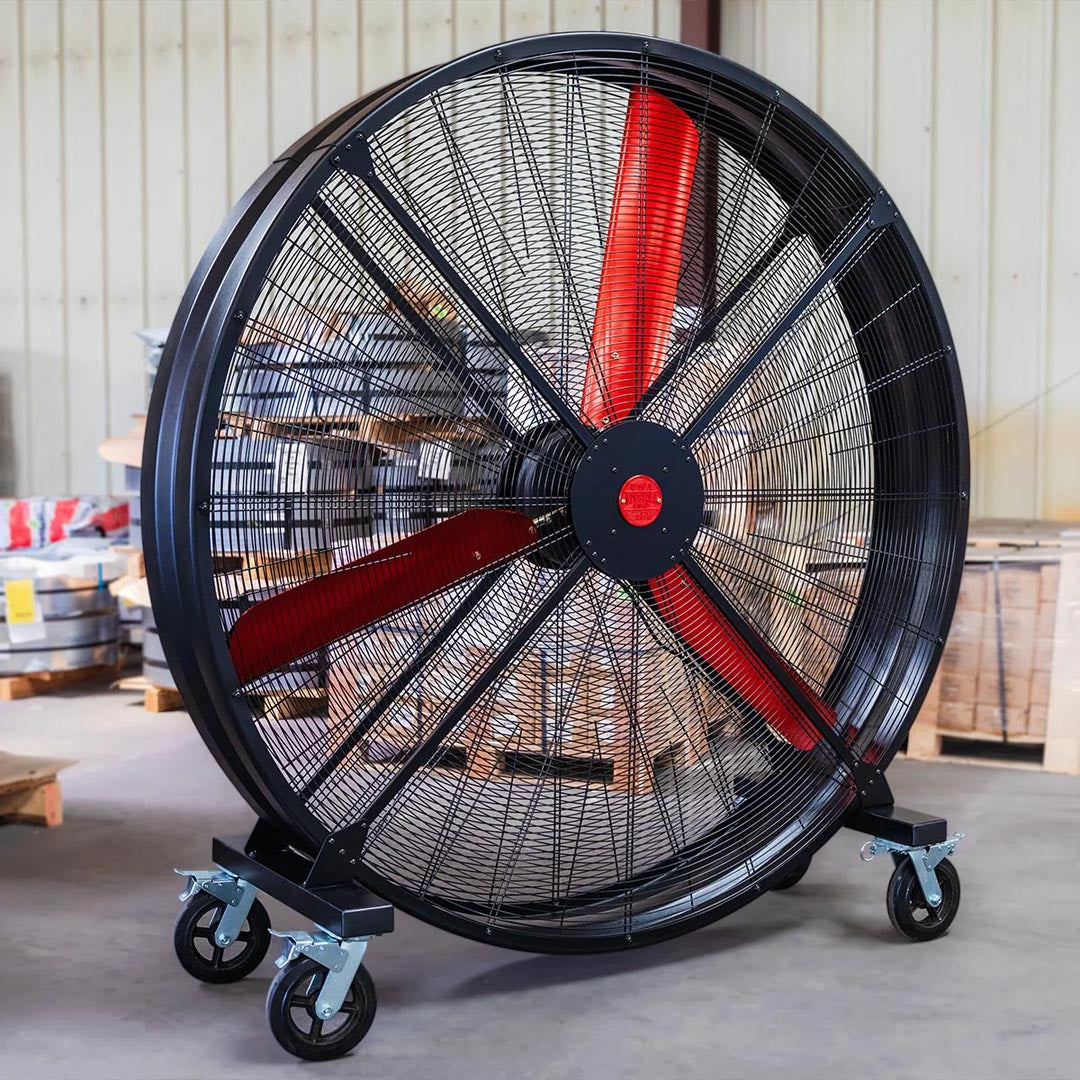
Versatility in Seasonal Use
Unlike air conditioning, which is primarily beneficial during warm weather, HVLS fans offer advantages throughout the year. In winter, they can be run slowly to gently push warm air trapped at the ceiling down to floor level without creating a chilling breeze. This process, known as destratification, can result in substantial heating cost savings in colder climates by optimizing the efficiency of existing heating systems.
Thus, Industrial fans offer dual-season utility, enhancing their return on investment and making them a smart, long-term comfort solution.

Quieter Operation
While large air conditioning units and smaller high-speed fans can produce noticeable noise, Industrial fans are engineered for quiet operation. Their slow rotation and advanced blade design minimize noise, making them suitable for noise-sensitive environments such as schools, libraries, churches, and office spaces. This contributes to a more pleasant atmosphere without sacrificing performance.

Why Choose IFC Fans?
When it comes to delivering the best indoor comfort, there's no comparison—industrial fans are simply the best solution. Combining unbeatable energy efficiency, low operating costs, and environmentally friendly features, they are the ideal solution for large spaces where air conditioning alone won’t cut it. Because of all those reasons, over their quiet operation and their ability to enhance air quality and circulation, IFC fans stand out as the ultimate choice for businesses looking to optimize comfort while reducing their environmental footprint. With a proven track record in performance and durability, IFC fans are a smart, long-term investment for any facility. Simply put, IFC fans offer the perfect blend of innovation and reliability, making them the most effective and cost-efficient solution for your climate control needs.
Blog posts
View all-

The Power of 6-Foot Fans: Why Larger Floor Fans...
Explore the power of 6-foot floor fans in providing superior airflow for large spaces. Learn how IFC’s high-performance fans offer efficient cooling, reduce energy costs, and improve air quality in...
The Power of 6-Foot Fans: Why Larger Floor Fans...
Explore the power of 6-foot floor fans in providing superior airflow for large spaces. Learn how IFC’s high-performance fans offer efficient cooling, reduce energy costs, and improve air quality in...
-
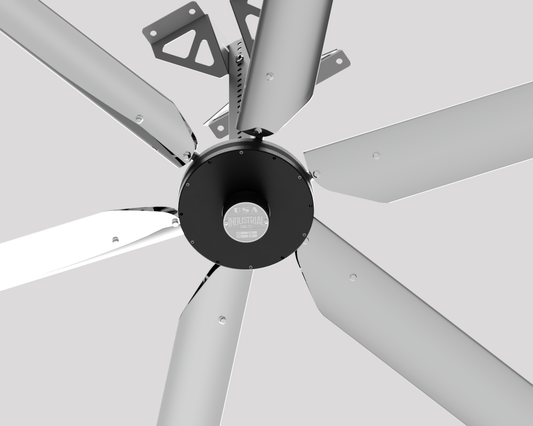
How Industrial Ceiling Fans Improve Air Quality...
Discover how industrial ceiling fans can significantly improve air quality in large buildings. Learn how IFC’s DF-3 and DF-6 models enhance ventilation, reduce humidity, and create a comfortable, healthier environment...
How Industrial Ceiling Fans Improve Air Quality...
Discover how industrial ceiling fans can significantly improve air quality in large buildings. Learn how IFC’s DF-3 and DF-6 models enhance ventilation, reduce humidity, and create a comfortable, healthier environment...
-

How to Beat Summer Heat with IFC Industrial Fans
Summer heat can bring about discomfort in large industrial and commercial spaces, but there’s no need to rely solely on expensive air conditioning. Industrial fans are an efficient, cost-effective way...
How to Beat Summer Heat with IFC Industrial Fans
Summer heat can bring about discomfort in large industrial and commercial spaces, but there’s no need to rely solely on expensive air conditioning. Industrial fans are an efficient, cost-effective way...
Subscribe to our emails
Be the first to know about new collections and exclusive offers.

